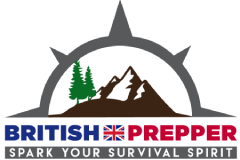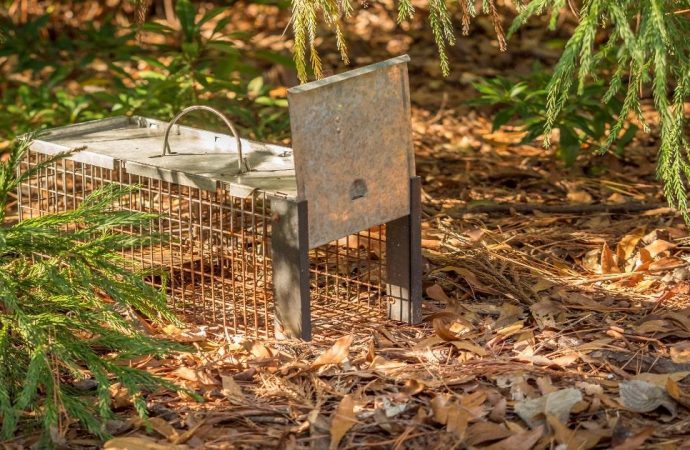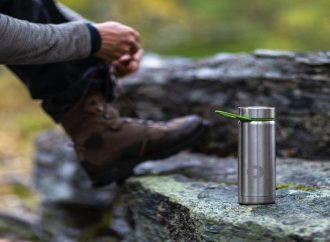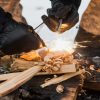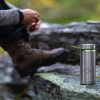Preppers can agree that a key element to survival is finding a nutritious and energy-rich source of food. One way to do this is by trapping small animals found in the UK like rabbits and squirrels, or larger prey like deer. However, there is the argument that this is not humane, but what do preppers
Preppers can agree that a key element to survival is finding a nutritious and energy-rich source of food. One way to do this is by trapping small animals found in the UK like rabbits and squirrels, or larger prey like deer.
However, there is the argument that this is not humane, but what do preppers do in a life or death survival situation? Will it be humane to let your own children starve?
In this article we will look at how animal trapping can be humane if it is carried out quickly through looking at UK legislation, the importance of animal trapping, and alternatives to it like hunting.
What Does UK Legislation Say?
There are two pieces of legislation which deem the use of animal trapping as illegal. These are the Agreement on the International Humane Trapping Standards (AIHTS) 2019 and the Wildlife and Countryside Act 1981.
As it stands, these laws are excellent markers as a guide to how animals should be treated, but in a life or death situation we believe it’s acceptable to bend or break them in proportion with you as a human staying alive – which should be your ultimate goal.
You may have to do things during SHTF times of survival you wouldn’t normally like to do to ensure yourself and your family stay well nourished and safe.
First, looking at the AIHTS, this aims to protect animals from being trapped and killed for their pelts. It also aims to promote animal conservation, particularly more endangered species in the UK, as well control pest populations.
Further to this, it outlines the specifications for using traps. As preppers would be using traps to kill animals, the legislation here suggests that these traps (which should be previously tested) should render the animal unconscious within 300 seconds (part 3.3 of legislation). This is to avoid any prolonged suffering for the animal.
Second, the Wildlife and Countryside Act highlights the fact that you require a license to trap some species of animal across the United Kingdom. These include otters, badgers, beavers, and pine martens.
When applying for a license you must apply directly to the UK country that you will be trapping in – either England, Scotland, Wales, or Northern Ireland – as these have their own application procedures.
These licenses are typically for getting rid of vermin rather than hunting for food purposes.
In addition to this, there is also legislation in the Animal Welfare Act, which highlights that importance that no animal should suffer, even when using a trap.
Furthermore, the Pest Act 1954, Agricultural (Scotland) Act 1948 and Wildlife and Natural Environment Act 2011 (Northern Ireland) place greater emphasis on the fact that traps should only be used if permitted through the acquisition of a license and in approved circumstances.
Not complying in these settings is regarded as an offense and treated accordingly.
Importance Of Animal Trapping
If preppers adhere to the rules in the legislation by using approved traps and ensuring that the animals are unconscious and killed quickly and with minimal pain, then it can be argued that this is in fact humane.
There are two types of traps used to manage the wildlife in the United Kingdom. These are spring traps which comply with the above legislation, and cage traps.
Spring traps typically consist of a trigger plate and jaw that catches the animal when it puts its weight on the plate. The use of these will depend on which part of the UK are you in but will require a license to use regardless.
Cage traps come in a variety of sizes to catch different species. They consist of a box that contains a wire mesh and has an end that closes when it has been sprung by a plate or hook.

These can be used on animals that are not protected. These can be used with a license, but the user must check the cage regularly and release any animals that they did not intend to capture.
Although traps do require a license, it is worthwhile for preppers spending some time to make themselves aware of the different types and purposes in case they will be required to make use of them in a survival setting in the future.
If you are looking to trap animals as a food source, other methods are suggested. Perhaps the most obvious of these is to shoot the animal instead. Although it is illegal to shoot some species, you can shoot animals such as wild hares and grey squirrels.
Further to this, if you are on private land, or have the land owners permission, you can also use snares to catch animals such as rabbits, brown hares, and foxes.
Animals that are caught on snares must be killed quickly by shooting at close range or other quick method to prevent the animal from suffering any longer than necessary. They are considered a reasonably humane option, but cannot be used to catch any protected species, which must be released from a snare.
Animal Trapping In A Survival Setting
Although animal trapping is generally illegal across the four British countries, in a survival setting these rules probably may no longer apply. Not that they will be repealed necessarily, but there may be extenuating circumstances, or maybe the ability to enforce such rules may not be possible.
It can be argued that although causing harm to animals in this way by trapping them to kill and use as a food source is not humane, it does help with our survival at the end of the day.
With this in mind, the humanity behind animal trapping becomes less important than ensuring the survival of human beings, in circumstances where there is a thin line between surviving and not.
Summary
To conclude, although trapping animals may not be pleasant, it can be regarded as humane provided the animal experiences minimal suffering. Due to this, we recommend that you buy a trap cage or two and store them away unless you should neeed them for survival.
Preppers will agree that this becomes less important in a survival setting where your own survival is your key priority, and so taking time to explore trapping procedures (although not using them) may be a useful step in your preparations.
